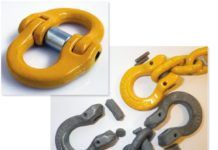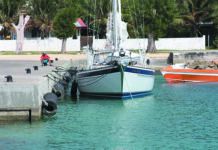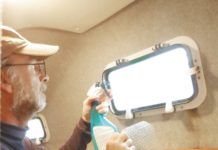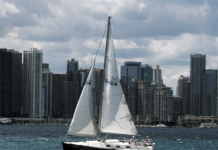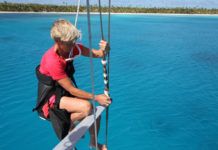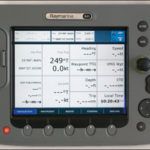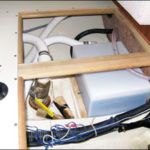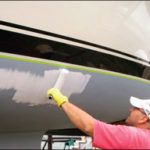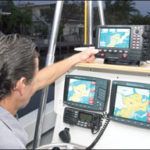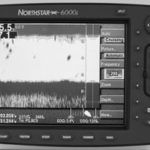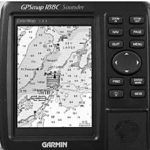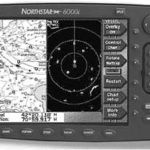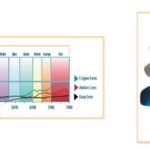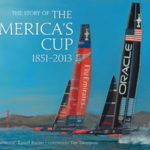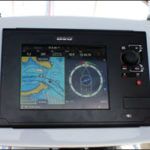Home Search
sunglasses - search results
If you're not happy with the results, please do another search
Two 12-inch Chartplotters Go Head-to-Head
After testing the 12-inch Garmin 5212 touchscreen and the Raymarine E120 multi-function displays in August 2008, Practical Sailor pitted the newest big-screen chartplotter, the Simrad NX45, against its well-used Garmin, the subject of a long-term test on one of Practical Sailors test boats. For this head-to-head test, we looked at day and night viewability, functionality, user-interface, and price. We also looked closely at the software that each uses: Garmin uses Bluechart g2 software, Simrad C-Map MAX, and Raymarine Navionics.
Mailport: 07/09
Were trying our best to provide subscribers with the most value for their money, but for now, we must continue our policy of charging everyone to download articles published more than two months prior. Subscribers get a discounted rate on these archive articles, available at www.practical-sailor.com, and all subscribers have full access to this months issue and the previous months issue, as well as to other subscriber-only online content. Readers who register online get e-mail notifications, along with issue highlights, when each new issue is posted online. We encourage readers to download and save the articles (features are now available in PDF format) as soon as they become available. We recognize the value of having access to archive tests and are working to expand subscriber access.
Mailport: 04/09
I read with interest your evaluation of first aid kits, which wrapped up with the final installment in the December 2008 issue. Id like to add a couple of points: Weekend, cruising, and bluewater sailors should invest in a good up-to-date first aid and CPR course. It is as important as a functional bilge pump. The responsible sailor can outfit a substantial and superior first-aid kit for much less money than a commercially available kit. The kit should be appropriate for the expected duration a victim will need treatment prior to evacuation. Most commercial kits contain a lot of fluff and are unnecessarily redundant-a lot of Band-Aids. I stress to distance sailors stocking a few prescription items and aggressive treatment for seasickness, beyond Bonine. I favor a solid medical text such as "A Comprehensive Guide to Marine Medicine," by Dr. Erick Weiss and Dr. Michael Jacobs, or "Medicine for Mountaineering and other Wilderness Activities," by James Wilkerson. The latter is available from Mountaineer Books. Both texts give guidance on stocking kits appropriate for your boat. Remember, the victim may be the captain or medical officer, and a novice may be the one rendering treatment. A medical guide is an invaluable resource.
The Multitasking Standard Horizon CPV350 Challenges Top-Performing Chartplotters and VHF Radios
The CPV350 has a long list of features that go beyond the ability to transmit and receive. It has an integral 30-watt hailer with automatic and manual foghorn capability, sophisticated DSC capabilities with a second receiver for receiving channel 70 digital signals, an easy-to-access menu, and a large rotary knob for channel selection that doubles as a range and zoom tool for the chartplotter. It is WAAS and AIS capable (when coupled with an AIS receiver). Its 7-inch, high-resolution (800-x-480), color display is comparable to that of the Navman Trackfish 6600, Practical Sailor s Best Choice among tall screen plotter/sounders reviewed in the June 2006 issue. The main drawback we see in the CPV350 is that by having one device that handles multiple duties, system redundancy is lost.
Northstar 6000i Network: Easy to Use, but Pricey
We rated the Northstar 6000i's sounder, daytime viewability, and overall user interface Excellent, but its high price and screen fogging hold it back. The Furuno system is still our top choice.
Garmin 188C vs. Si-Tex Combo
In a two-on-one chartplotter/sounder shootout, a pair of Si-Tex units takes on a single Garmin combo machine.
Networked Systems: Furuno vs. Raymarine
Big screens and big bucks—Raymarine and Furuno offer completely networked electronics packages that allow monitoring—and complete control—from more than one location.
Look for UV protection, fit, impact resistance
The ideal pair of sunglasses will vary among individuals. Fair-eyed people, for example, often prefer darker lenses. Our list of must-haves include UV protection, polarization, impact-resistant lenses, and good fit.
Practical Gifts
Practical Sailor editors have put together some gift-giving-or gift-getting-ideas for the sailorly crowd. Here are some perennial favorites and new products weve evaluated that most sailors would be happy to find among their holiday loot.
A Look at B&Gs New Zeus Touch
Sailing and tactical software has long been B&Gs strong suit. The Zeus Touch is the first time the Navico companys high-end racing software has been tweaked for mainstream use and bundled along with normal chartplotter and GPS functions. At first blush, it appears to be a dressed-up version of the Simrad NSS. The big difference between the two is the software. It uses the boats set sailing characteristics to calculate tacking or jibing points to most efficiently reach a given destination. Many of these functions are simple measurements that any skipper can predict or calculate using a paper chart and simple arithmetic, but the Zeus Touch delivers this information instantaneously and continuously, and removes the chance of human error.











